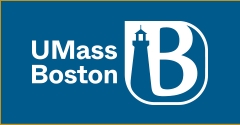Date of Completion
5-7-2021
Document Type
Campus Access Capstone
Faculty Advisor
Eileen Stuart-Shor
Site Advisor
Dawn-Marie Khoury
Second Reader
Manu Thakral
Abstract
BACKGROUND: Musculoskeletal abnormalities are associated with multiple contributing factors. In 2011 the costs related to diagnosis and treatment were estimated to be $213 billion. The current available treatment options for patients with musculoskeletal symptoms has not been successful. Patients are searching for natural and less invasive treatments that are effective. Novel regenerative therapies are emerging at the forefront as a promising alternative solution.
PROBLEM: Patients dealing with chronic musculoskeletal conditions are often looking for alternate treatments but are unaware of the full range of treatment options available.
AIM: The aim of this project was to introduce patients with chronic musculoskeletal disorders suffering with poorly managed/controlled pain/symptoms to novel regenerative therapies as another source of treatment. The goal of this project was to educate patients with musculoskeletal disorders on the history and benefits of novel regenerative therapies allowing them to make an informed, shared decision with their primary care provider regarding regenerative measures.
METHODS: The Plan Do Study Act method of quality improvement guided the development, implementation, and evaluation of this project.
INTERVENTIONS: A variety of methods such as creating social media posts, sending emails, conducting webinars, producing videos, and passing out handouts were used to bring awareness and educate patients about novel regenerative therapy. Rogers’ Theory of Diffusion was used to conceptualize the intervention and execute the assessment. Post education questionnaires were used to calculate the newly acquired knowledge from those who participated.
OUTCOMES: This project informed and enlightened those with chronic musculoskeletal pain who have not had relief with their current treatments. Although more women and minorities attended the information sessions, most individuals who sought a consultation and treatment were older white men.
RECOMMENDATIONS: The practice where this quality improvement project took place will continue education on regenerative therapies, increase awareness of innovative modalities, and expand on different methods of awareness to reach those in the “digital divide”. Further research and policy/reimbursement briefs regarding the effectiveness of regenerative therapies as a treatment option is needed.
Recommended Citation
Teixeira, Melissa Rodrigues Pires, "Introducing the Benefits of Regenerative Therapies as an Effective Treatment Modality for Those Suffering with Chronic Musculoskeletal Pain" (2021). Doctor of Nursing Practice Scholarly Projects. 6.
https://scholarworks.umb.edu/nursing_dnp_capstone/6

Comments
Open access to this Campus Access Capstone is made available to the UMass Boston community by ScholarWorks at UMass Boston. If you have a UMass Boston campus username and password and would like to download this work from off-campus, click on the "Off-Campus UMass Boston Users" link above.